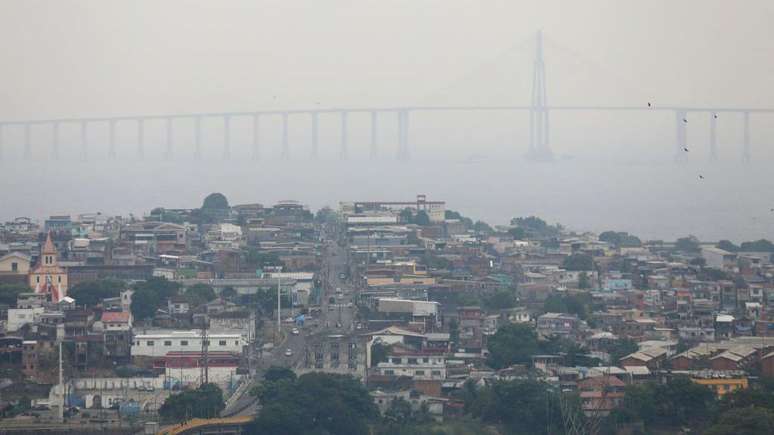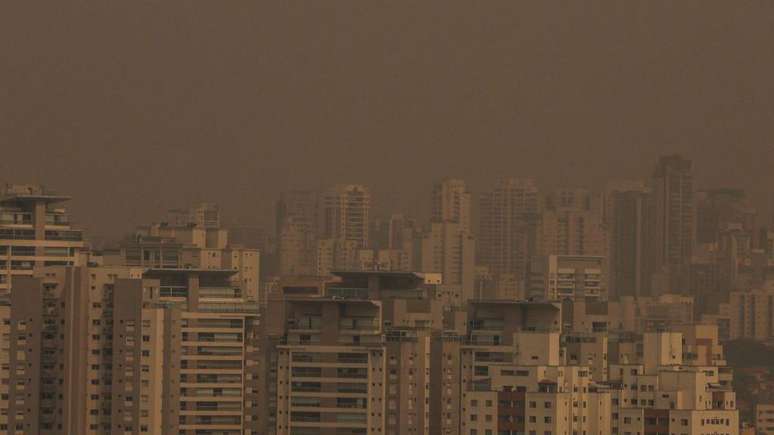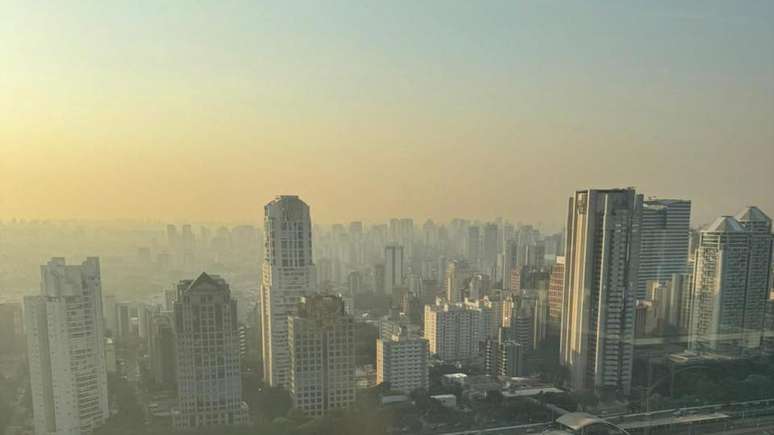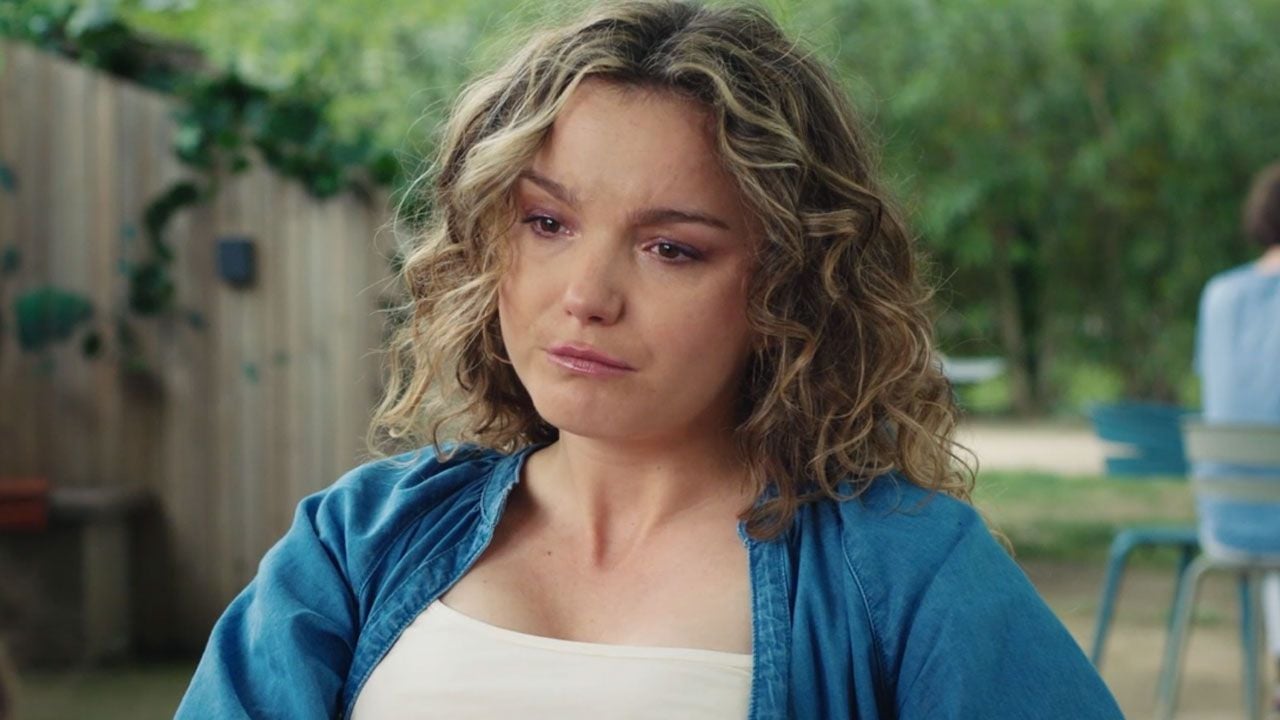Of the Brazilian cities that have reached critical levels of pollution, only São Paulo has an action plan, according to a study by the Alana and Ar institutes led by João Paulo Amaral. In eight other countries, large cities have planned a series of measures in the event of a crisis.
Brazilian cities are not treating the air pollution crisis this winter with the seriousness the situation requires, says researcher João Paulo Amaral.
With the worst air quality in the country, the city of Porto Velho (RO) has been under a thick layer of pollution for days, with “very unhealthy” air this Monday (16/9), according to the air index. international monitoring of IQAir.
Other major Brazilian cities have faced serious problems with peak air pollution, such as Campinas (SP), Manaus (AM), Rio Branco (AC) and São Paulo (SP) among others: the five cities were the most polluted in Brazil at the time.
In São Paulo, air quality improved on Monday (16/9), after a rainier weekend, but many of the health problems caused by pollution continue.
Air quality was classified as “very bad” by the Environmental Company of the State of São Paulo (Cetesb) on Friday (13/9), concluding a week in which the city spent four days at the top of the air quality ranking IQAir’s Most Polluted Cities.
In addition to low air humidity and the thermal inversion that occurs in winter, fires in the southeast, north and center-west regions of Brazil are among the causes of the concentration of pollutants and the worsening of air quality, according to MetSul.
None of the five cities has a crisis action plan, that is, an official plan on how to act in moments when air quality reaches emergency levels, explains João Paulo Amaral, head of nature at the Instituto Alana (a child protection agency) who coordinated a study analyzing Brazil’s level of preparedness compared to eight countries (France, Spain, the United States, the United Kingdom, Mexico, Chile, Ecuador and Colombia).
“If pollution levels in Paris were to reach half of those in São Paulo, the city would have already adopted emergency measures, such as free public transport to encourage its use, or more restrictions on cars in the central region,” Amaral said in an interview with BBC News Brasil.
The research was conducted by the research group Instituto Ar e Alana, a nonprofit organization that defends children’s rights, and found only one action plan for critical episodes throughout Brazil: a 1978 decree created by Cetesb in the state of São Paulo.
“In addition to being very outdated, this plan is never put into practice,” says the expert.
An action plan should contain guidance on how to monitor; what level of pollution is needed to trigger it; what the responsibilities of each government agency are; and what pollution control actions should be taken.
“It is clear that the population must take individual measures to protect themselves, but this is not an individual problem, it is an environmental and public health issue that requires action by the authorities in all areas,” says Amaral.

How does it work in other countries?
The other eight countries analyzed in the study have more recent action plans and, with the exception of Ecuador, much lower pollution limits for initiating emergency action than Brazil, the study shows.
One of the main air pollutants is the so-called particulate matter, that is, very small polluting particles, which can be inhaled and cause various damage to health.
In Brazil, particulate matter levels considered critical are above 125 𝜇g/m³ (attention level). Above 210 is an alert level and above 250 is an emergency level.
In France and Spain 25 𝜇g/m³ is already considered a critical level and above 50 emergency measures begin.
In Mexico and Colombia, emergency measures start at 150 𝜇g/m³; in Chile, at 170.
Monitoring critical levels is important so that authorities have levels from which to initiate measures to contain and mitigate the damage caused by pollution to health, but Amaral says there must be action plans.
“Brazil is very behind in legislation on this matter,” says Amaral.
“Not only are the critical levels far above what is considered the limit by the WHO [Organização Mundial de Saúde]there are no action plans for critical incidents,” he added.
In the other countries analyzed in the study conducted by Amaral, large cities have planned a series of measures in case pollution levels reach critical levels.
The researcher explains that the study highlights measures that aim to protect especially the most vulnerable populations: children and the elderly.
In Colombia, from the moment pollution reaches the “alert” level, the action is to order the suspension of classes in the entire area that is within this specific level of concentration of pollutants.
“In the case of the ’emergency’ level, the order is the same, suspending the activities of all educational institutions and, in some cases, even evacuating the exposed population,” the study emphasizes.
This is a measure that Amaral does not see as positive for Brazil, since it is an interruption of children’s right to education. But it shows how the country has given priority to the most vulnerable population.
In Paris, France, when the critical level of pollution is reached, the city hall implements a series of measures to limit activities that contribute to pollution, such as banning car traffic in the city center, offering free metro tickets (to encourage the use of public transport), creating school holidays, among others.
There is also a large communication campaign underway guiding the population to adopt protective measures, such as drinking plenty of water, avoiding outdoor physical activity and keeping windows closed.
In the UK there are a number of programmes that aim to reduce urban pollution in the long term – particularly targeting the wellbeing of children – such as a programme to reduce pollution in regions where schools are located.
This includes, among other measures, increased reforestation, reduced traffic, and the implementation of cycle paths.
The same goes for the United States, where critical incident responses are specific to each region of the country.
“The plans need to be regional, because there are many differences within the same country, from population density to main economic activities and sources of pollution,” Amaral explains.

What do Brazilian cities say?
Asked by BBC News Brasil, the city of São Paulo said it had taken measures to address the effects of climate change as a whole.
The city hall said it has declared 32 private green spaces as public utility areas, which will expand the city’s protection zone from 15% to 26% of the municipal territory.
Additionally, the City said it has a monitoring system in place to prevent forest fires, which has reduced fires in city parks by 16% since 2020.
“The City Hall has made progress such as purchasing the first electric vehicles for the Guardia Civil Metropolitana. In total, by the end of the year there will be 50 vehicles,” the City Hall emphasizes in a statement.
The administration also said it is implementing a fuel switch for garbage collection trucks, electrifying the bus fleet and offering a tax break for electric car owners.
The city hall also said that the Civil Defense Department had put the entire city on alert due to low relative humidity last week, and that tents had been set up around the city to distribute water and care for pets.
“The Municipal Health Department recommends that the population stay well hydrated, protect themselves from the sun, keep indoor environments humid through spray cans, vaporizers, wet towels and containers with water and avoid physical exercise outdoors between 11:00 and 18:00”, states the Municipality in a note.
The municipalities of Manaus and Porto Velho also cited measures taken to combat pollution. The municipalities of Boa Vista and Campinas did not respond to questions in the report.
The Municipality of Porto Velho specifies that, although there is no specific plan for critical episodes of air pollution, “the creation of Law No. 14,850/2024, which establishes the guidelines for monitoring air quality and disseminating data to the population, represents significant progress.”
The city also says it needs financial and human resources to increase employee training to address the problem and increase publicity about the issue among the public.
It also states that it “runs a municipal nursery with the aim of promoting reforestation in the city” and that it has two environmental education projects to “raise awareness and consciousness of environmental dialogue.”
Regarding fires – one of the main factors of pollution in the region –, Porto Velho said it “has carried out advertising campaigns through radio, television, websites and social networks to raise awareness among the population about the risks associated with fires” and that the Municipal Secretariat for the Environment and Sustainable Development (SEMA) has intensified controls in the capital and in neighborhoods.
The Manaus city hall said the city was in a “mobilization phase” and had created a committee to fight the fires.
He also said that “preventive actions” have been established to fight the fires and that he is monitoring and analyzing the information on the outbreaks released by the Inpe and that most of the outbreaks come from within the state.
The city said it has published measures that must be adopted by the population, such as drinking water and eye and respiratory protection.
“Inhaling particles generated by fires can cause reactions ranging from mild discomfort to symptoms such as headache and sore throat, difficulty breathing, watery and red eyes, allergic attacks and respiratory infections, with asthma, bronchitis, sinusitis, hoarseness, cough, conjunctivitis and acute cardiovascular problems,” the municipality of Manaus explains in a statement.
“In case of mild respiratory discomfort or need for further advice to avoid the effects of smoking on health, the user should contact the Basic Health Unit closest to their home.”
Source: Terra
Rose James is a Gossipify movie and series reviewer known for her in-depth analysis and unique perspective on the latest releases. With a background in film studies, she provides engaging and informative reviews, and keeps readers up to date with industry trends and emerging talents.






